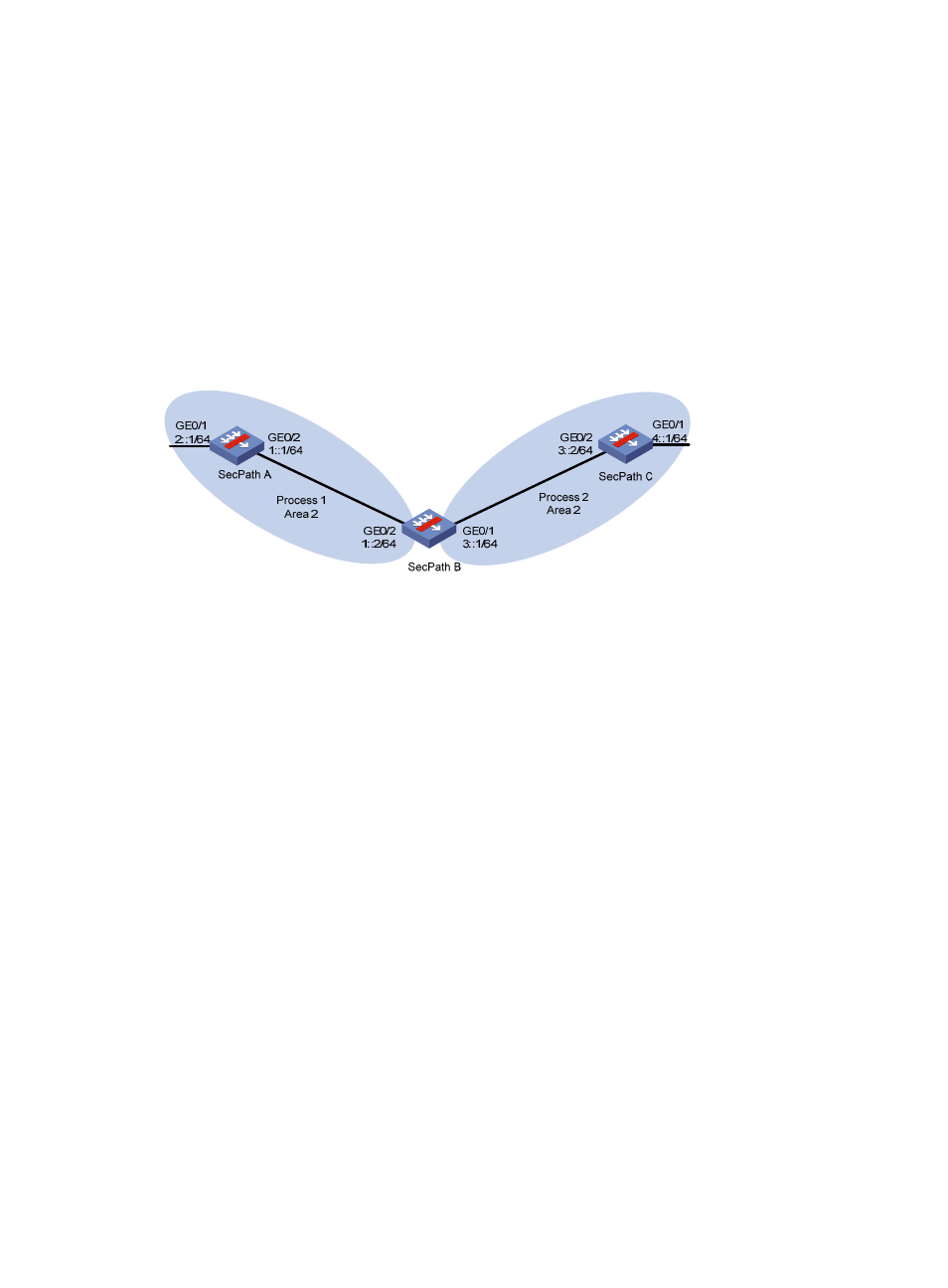Configuring ospfv3 route redistribution, Network requirements, Configuration procedure – H3C Technologies H3C SecPath F1000-E User Manual
Page 798

773
Configuring OSPFv3 route redistribution
Network requirements
•
SecPath A, SecPath B, and SecPath C are in Area 2.
•
OSPFv3 process 1 and OSPFv3 process 2 are enabled on SecPath B. SecPath B communicates with
SecPath A and SecPath C through OSPFv3 process 1 and OSPFv3 process 2, respectively.
•
Configure OSPFv3 process 2 to redistribute direct routes and the routes from OSPFv3 process 1 on
SecPath B and set the default metric for redistributed routes to 3. Then, SecPath C can learn the
routes destined for 1::0/64 and 2::0/64, and SecPath A cannot learn the routes destined for
3::0/64 or 4::0/64.
Figure 385 Network diagram
Configuration procedure
1.
Configure IPv6 addresses for interfaces. (Details not shown.)
2.
Configure OSPFv3 basic functions:
# Enable OSPFv3 process 1 on SecPath A.
<SecPathA> system-view
[SecPathA] ipv6
[SecPathA] ospfv3 1
[SecPathA-ospfv3-1] router-id 1.1.1.1
[SecPathA-ospfv3-1] quit
[SecPathA] interface GigabitEthernet 0/2
[SecPathA-GigabitEthernet0/2] ospfv3 1 area 2
[SecPathA-GigabitEthernet0/2] quit
[SecPathA] interface GigabitEthernet 0/1
[SecPathA-GigabitEthernet0/1] ospfv3 1 area 2
[SecPathA-GigabitEthernet0/1] quit
# Enable OSPFv3 process 1 and OSPFv3 process 2 on SecPath B.
<SecPathB> system-view
[SecPathB] ipv6
[SecPathB] ospfv3 1
[SecPathB-ospfv3-1] router-id 2.2.2.2
[SecPathB-ospfv3-1] quit
[SecPathB] interface GigabitEthernet 0/2
[SecPathB-GigabitEthernet0/2] ospfv3 1 area 2
[SecPathB-GigabitEthernet0/2] quit
[SecPathB] ospfv3 2